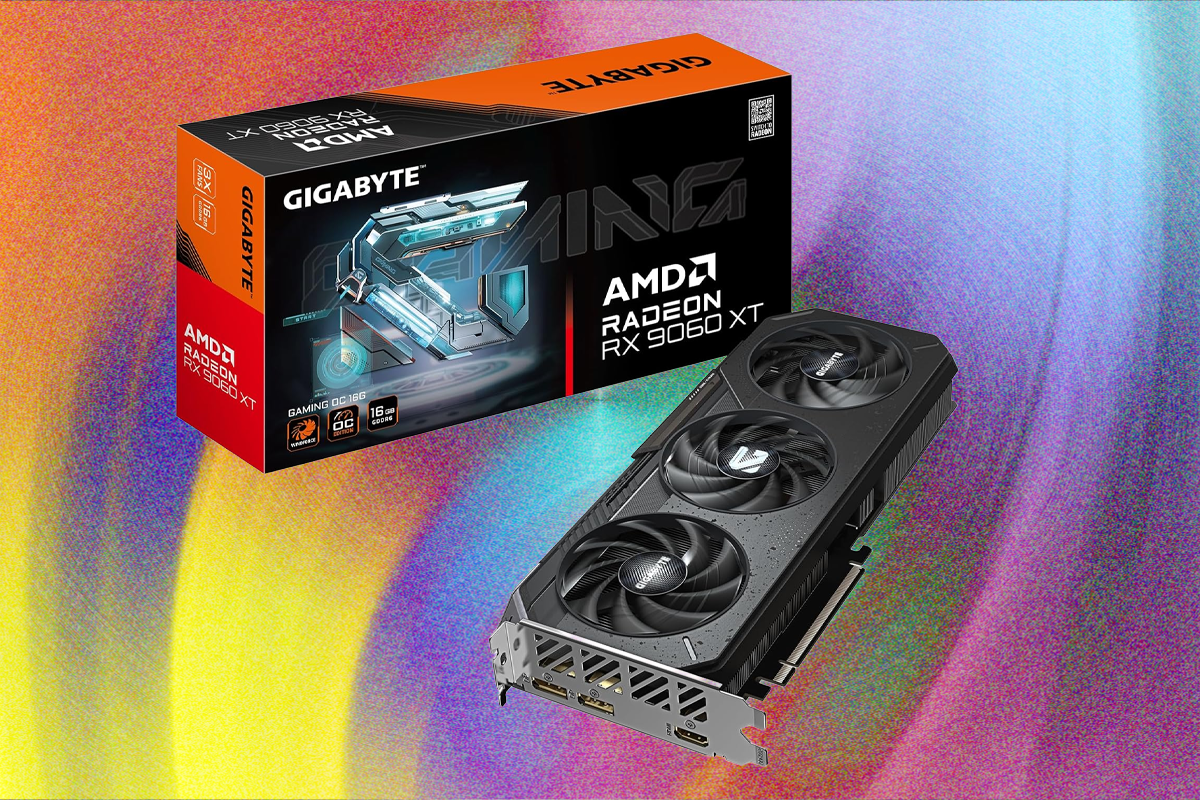It’s AMD’s turn. After months of $2,000+ GPUs and long discussions of DLSS, we’re finally on the red team’s turf. AMD’s strength historically lies at the budget end of the spectrum, where the majority of gamers are playing at 1080p, and spending $1,000 or less for their entire system.
Even though we really recommend splurging on a GPU, that’s just not the reality for most folks. An $800 GPU needs $1,200 in other parts, and at that point most people who aren’t into PC gaming will start shopping for an Xbox.
For under $400, the Radeon RX 9060 XT manages to trade blows with the similarly priced RTX 5060 at 1080p, and pushes ahead in 1440p performance. If you’re looking at both on the shelf, this card has a longer life ahead of it, and better performance in demanding games and at higher resolutions.
Form Factor and Power
Photograph: Brad Bourque
I know folks want to get right into performance, so I don’t want to spend forever on the physical aspects of the card. This Gigabyte Windforce OC model is somewhat premium, with a full metal backplate that has a nice cut-out for cooling, and three full-sized fans. If you have the room, the extra fan will keep your system quieter and reduce the risk of thermal issues.
It still uses the standard eight-pin PCIe power that you’re used to, so don’t worry about upgrading your power supply or buying an adapter. I think this will make it a much easier upgrade path for most, which is crucial for the budget GPU world.
One interesting note about the Gigabyte model I received is that there’s an RGB LED on the upper/outer corner. There’s a little sliding piece of plastic with the Gigabyte logo you can put over it to reduce the light, but you’ll need to use the Gigabyte software or other RGB LED controller to turn it off.
Benchmarks
Comparing cards with the same GPU manufacturer is more straightforward than crossing lines. Individual developer choices and use of different tech can shift the meter a few percent, and that’s often the difference between GPUs at the same price. Synthetic benchmarks can help us get a more precise view of the relative performance in a vacuum, with the least possible variance from game optimization.
Courtesy of Brad Bourque



